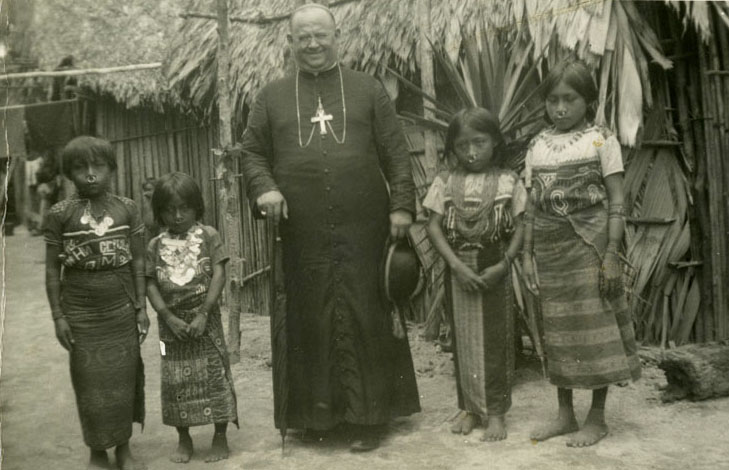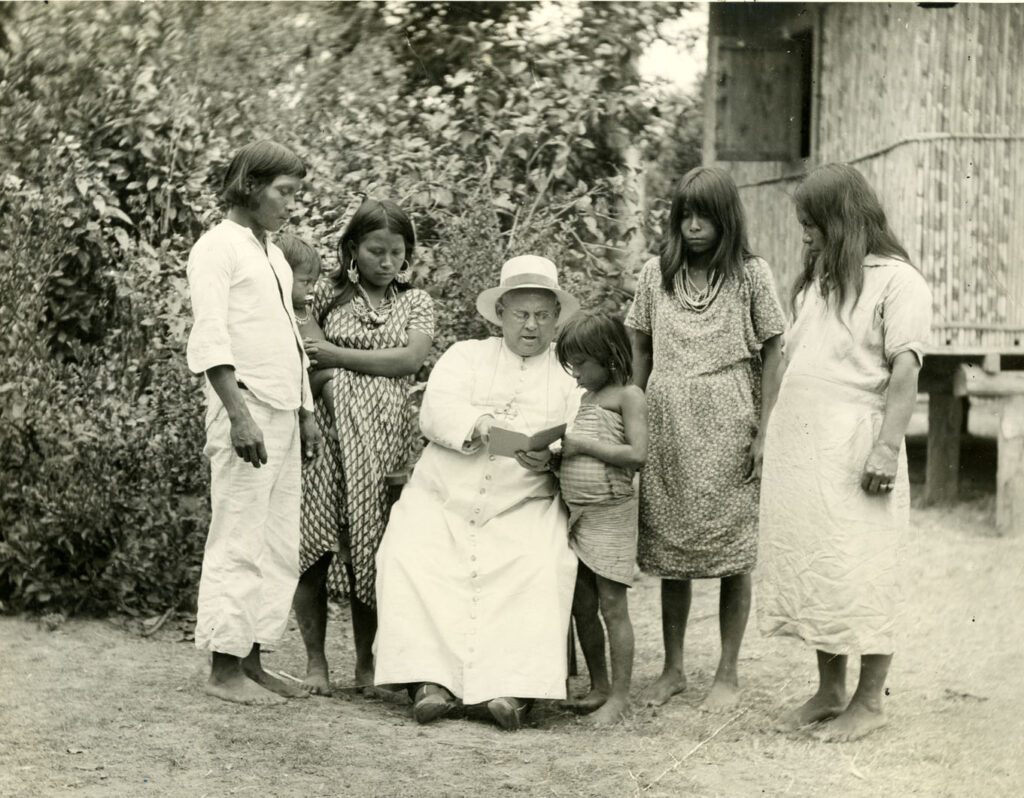When readers of The Voice of St. Jude paged through the August 1935 magazine, many paused to examine the large black and white photo of a bishop flanked by four Kuna children, in front of thatched huts. The bishop, a bit corpulent, strains a bit at his black cassock, but smiles benignly notwithstanding the draining heat.

The peculiar scene, more familiar in National Geographic, drew readers to “An Appeal from Bishop Preciado.” Fr. James Tort CMF, the magazine’s founder, addressed readers in a familiar fashion. Because The Voice had recently featured photos of Joseph Preciado, “We therefore feel that Bishop Preciado is not exactly a stranger to many of our readers.” Preciado, a Spanish Claretian, had served at highly-visible parishes in San Antonio. In 1934, Preciado was named the Vicar Apostolic of Darién, a sprawling zone east of the Panama Canal. While “last year in the Lone Star state,” Tort remarked, “What a difference in Bishop Preciado’s assignment then and now. He is pictured here with some of his little Indian charges—with rings in their noses.”
The American Claretians had a multi-layered history in Panama for three decades. In 1926, Fr. Juan José Maíztegui CMF was pulled from the US Province to become the Vicar Apostolic of Darién. (Maíztegui became Archbishop of Panama in 1933 until his passing in 1943.) In 1927, the American province took over administration of Claretian personnel in Panama. Soon after, Claretian priests and brothers took on an active, if challenging, mission among Kuna people at Narganá in the San Blas islands. Their work in Panama came to encompass six main communities, that served dozens of dispersed missions.
Bishop Preciado visited these places annually as he oversaw the vicariate from his residence in the city of Colón. He arrived on a small plane, by motor boat, and even in a cayuco (canoe). In the simple mission houses he enjoyed visits with his fellow Claretians, some of whom he knew from seminary days in Spain. Photos of Preciado with native people regularly appeared in The Voice of St. Jude and other Claretian fundraising material. In 1937, The Voice showed native adults building new chapels which needed altars, images, and bells. Preciado directly appealed to US readers to open their pocketbooks: “it should also be an investment for you . . . [offering] dividends for all eternity.” Donations for the “poor Vicariate” could be addressed to Preciado simply as Bishop of Colón, Republic of Panama, or to Fr. Tort at the Shrine of St. Jude in Chicago.

Bishop Preciado was a vital link between American Claretians and the Panama missions. He repeatedly spent half the year in the US, visiting Claretian communities and fundraising. As a Spanish-speaking bishop, he confirmed thousands of Mexican American youth in Chicago, San Antonio, Los Angeles and beyond. Without a doubt, Preciado spent more time in Texas, California, Illinois, and New Jersey than he did in the hard-to-reach missions among indigenous people of Panama.
Deborah E. Kanter wrote Chicago Cátolico: Making Catholic Parishes Mexican (University of Illinois Press, 2020). Her current research focuses on the Claretian Missionaries in the US and the creation of a national Latino ministry, 1902-2020.
